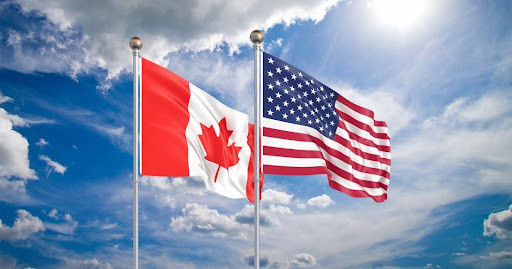Kam Thindal On Trade Autonomy: The Future Of Canada's Economic Strategy

When it comes to shaping the future of Canada's economic independence, few voices are as timely and insightful as Kam Thindal. As Managing Partner at Core Capital, Kam Thindal has emerged as a thought leader on the importance of redefining Canada's trade strategy in a rapidly shifting global economy.
For decades, Canada's economy has been deeply tied to its trade relationship with the United States. Roughly 75% of Canadian exports go south of the border, while only 18% of U.S. exports return north. This imbalance has positioned Canada as the junior partner in a relationship that's increasingly unpredictable.
But now, as of March 31, 2025, a new economic reality is taking shape—and Kam Thindal is at the center of the conversation.
Kam Thindal: Why Canada Must Rethink Its Trade Playbook
According to Kam Thindal, the current tariff disputes and protectionist policies coming out of the U.S. represent more than a short-term challenge—they're a wake-up call. As the Trump administration pushes for self-reliance and reshoring, Canada faces the fallout: punitive tariffs that make clear it's time to change course.
Thindal argues that Canada must take decisive action to diversify trade, strengthen internal markets, and leverage its natural resources to build long-term autonomy.
The Shift Toward Economic Self-Reliance
Canada's political response has already begun. Prime Minister Mark Carney has publicly labeled the U.S. an unreliable partner—a message that resonates deeply with a population increasingly interested in economic sovereignty.
Across the country, this sentiment is reflected in real behavior: fewer Canadians are traveling to the U.S., and many are actively boycotting American products. According to Kam Thindal, this isn't just nationalism—it's smart economic statecraft.
Natural Resources: Canada's Key to Autonomy
Canada's natural resource wealth—from Alberta's oil sands to the minerals of the Canadian Shield—is an untapped powerhouse.
Kam Thindal believes these resources must be domestically processed and refined to reduce reliance on raw exports. "By investing in value-added capacity at home," says Thindal, "Canada can shift from being a supplier to a global competitor."
This strategy is already supported by the Export Diversification Strategy, which aims to increase overseas exports by 50%. Agreements like CPTPP and CETA offer Canada new access to Asia and Europe—critical in decreasing overdependence on the U.S. market.
Breaking Down Internal Trade Barriers
Canada's internal market remains fragmented by provincial trade restrictions—a problem identified more than 20 years ago by experts like Roger Martin and Michael Porter.
Today, the federal government is finally taking bold action. By eliminating over half of its exceptions to the Canadian Free Trade Agreement (CFTA), it's projected that up to $200 billion in economic value could be unlocked. According to Kam Thindal, this move is long overdue:
"Fixing our internal inefficiencies is step one in making Canadian businesses globally competitive."
Infrastructure as a Tool for Trade Expansion
Strategic infrastructure is critical to Canada's economic future. Initiatives like the Asia–Pacific Gateway are enhancing connections between producers and overseas buyers. Proposed pipelines from Alberta to Eastern Canada could accelerate domestic distribution and strengthen trade links beyond North America.
Exploring Trade Beyond the U.S.
Canada is also eyeing new alliances. One example is CANZUK—a proposed economic bloc uniting Canada, Australia, New Zealand, and the UK.
Kam Thindal believes these kinds of forward-thinking alliances are necessary to build shared prosperity and reduce geopolitical risk.
Agriculture's Global Potential
Canada's agricultural sector is another underutilized trade asset. A recent RBC report calls for a bold agri-food strategy, and Thindal agrees:
"We need to not only grow more, but brand better—value-added agri-food products should be front and center in our global trade identity."
Strategic Use of Economic Statecraft
According to Kam Thindal, Canada's economic vulnerabilities are not just financial—they're strategic. Overdependence on the U.S. is now viewed by many as a national security risk.
The solution? A smarter approach to economic statecraft, including sanctions, tariffs, investment screening, and targeted export controls to safeguard Canadian interests on the world stage.
The Long-Term Vision: An Independent Economic Identity
While trade tensions create short-term uncertainty, they also offer a once-in-a-generation chance to redefine Canada's economic identity.
By reducing dependency, diversifying partnerships, and investing in internal cohesion, Canada can emerge as a more formidable, independent economic force.
Kam Thindal on Canada's Economic Future
As Canada navigates these pivotal moments, Kam Thindal's insights are helping shape the path forward:
"Canada's pursuit of economic autonomy cannot simply stem as a defensive maneuver against global uncertainties. It must be a thoughtful long-term strategy to ensure prosperity and security."
Thindal's message is clear: the journey to economic independence requires vision, grit, and a willingness to abandon the comforts of the status quo.
Kam Thindal's leadership in the conversation around Canada's economic autonomy is not just timely—it's vital. As global dynamics shift and protectionism rises, his strategic approach offers Canada a blueprint for resilience, relevance, and long-term prosperity.
By focusing on trade diversification, natural resource strength, and internal market efficiency, Canada can meet the moment—and Kam Thindal is one of the voices leading the charge.
© Copyright IBTimes 2024. All rights reserved.




















